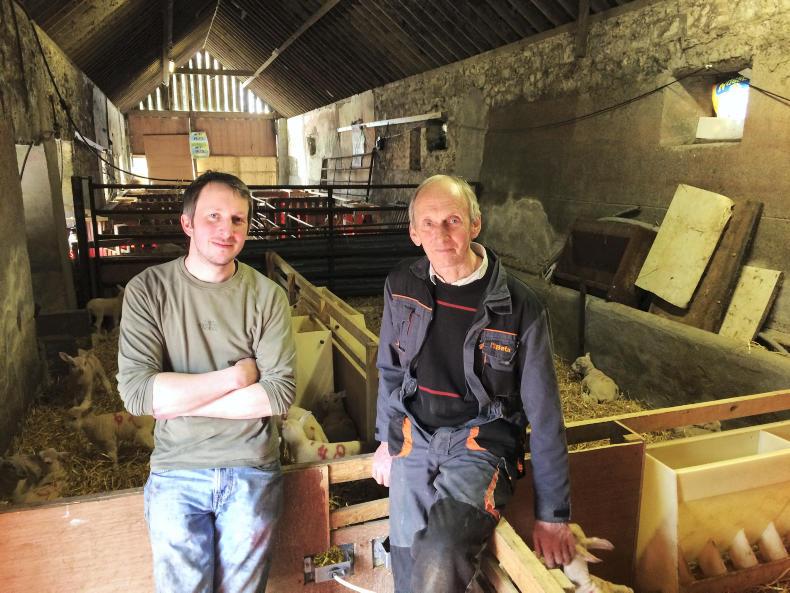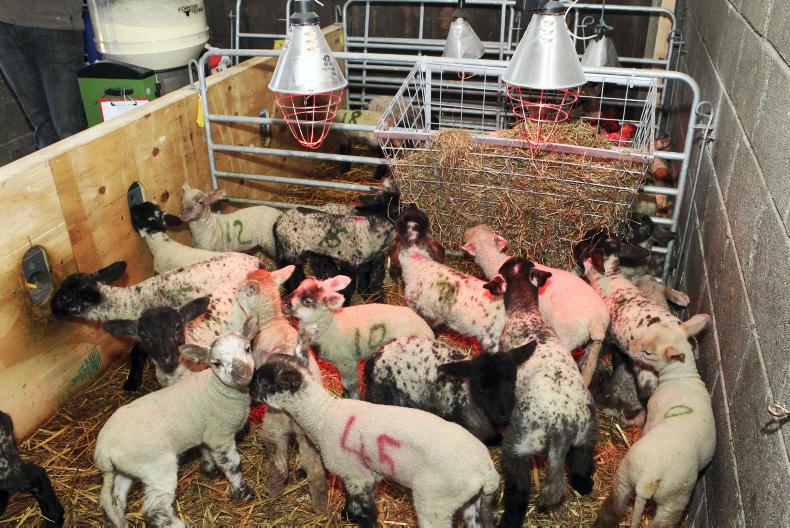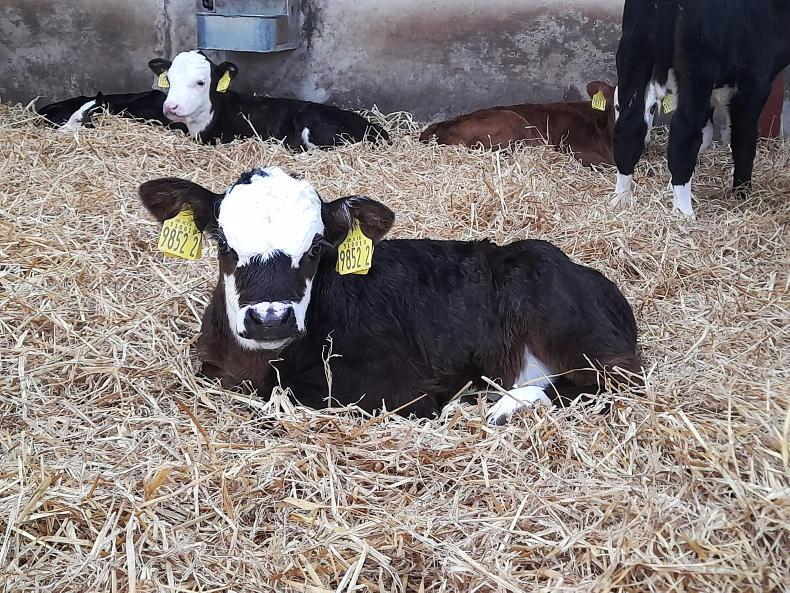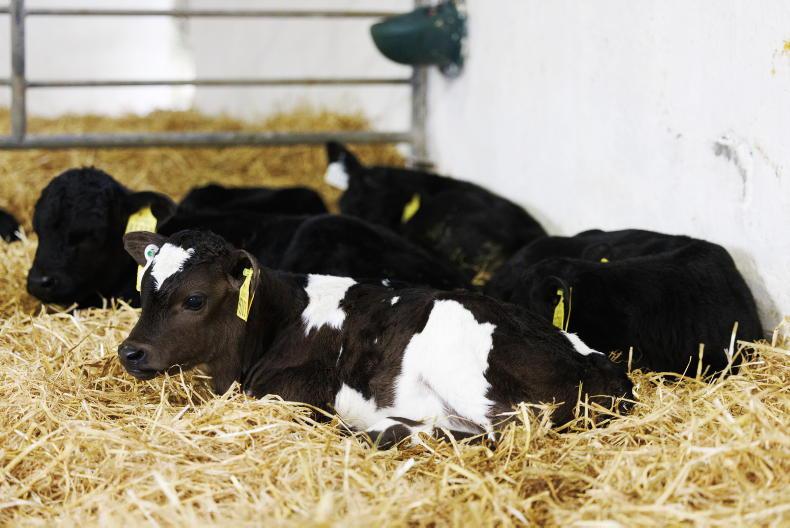With the excellent grass growing conditions in the run up to mating in 2014, reports of increased scanning percentages abound from around the country.
Increased litter size leads to an increase in the proportion of the flock carrying triplets, which is still viewed as a negative aspect by many producers. Where scanning rates are above two lambs per ewe, between 30% and 40% of the flock can typically be carrying three or more lambs. This requires a definite plan to deal with the ‘‘surplus’’ lambs.
Various options exist, including cross-fostering, turning ewes out with three lambs at foot or artificially rearing the surplus lambs. Where possible, lambs should be cross-fostered onto single-bearing ewes or ewes which lose their own lambs (assuming the ewe herself is healthy). Fostering is a skill in itself and despite best efforts is not always successful. Additionally, in flocks with high proportions of triplets, or an extended lambing spread, the potential for cross-fostering will be limited.
Artificial rearing
Artificial rearing can be a viable option on many farms. We carried out some work in this area in Lyons in 2014. The preparation for dealing with triplet/quad-bearing ewes begins several weeks in advance of lambing. Ewes’ nutritional requirements are increased, their ability to consume forage is reduced and concentrate supplementation must begin much earlier in pregnancy compared with twin-bearing ewes.
At about 10 weeks pre-lambing, the ability of the triplet-bearing ewe to obtain adequate energy from medium-quality conserved forage (typical quality on most farms) becomes limited (Table 1).
Concentrate supplementation must be introduced at this stage to ensure adequate lamb birth weight. As with all feeding programmes, adjustments for body condition score (BCS) are essential.
Late pregnancy diet
The contribution of conserved forage to the energy supply of the ewe should not be over-estimated. Triplet ewes will have a silage intake which is 15% lower than singles/twins. In the last two to three weeks of pregnancy, the physical effect of the developing lambs will further restrict intake.
Individual concentrate meal size should be limited to between 400g and 500g to minimise any potential negative effects on rumen pH (which can predispose acidosis, twin-lamb disease and even prolapse).
This programme should ensure the production of large, healthy triplet lambs and ample quantities of colostrum available. If operating an artificial rearing programme, where possible, and if the mother has sufficient colostrum supply, the lamb should remain with his mother for 24 to 36 hours. Failing this, artificial colostrum supplements can be used.
In 2014, we used the Volac product Volostrum with great success, though this is only one of a number of products on the market. In our trial, we selected the large male lambs from triplet litters. Once lambs were removed from the ewe, they were offered free access to artificial milk replacer. In our case, Lamlac was offered from a simple feeder which ensured the temperature of the milk replacer was maintained throughout the day.
While intakes are initially small, lambs quickly become accustomed to consuming the product, but some training for the first lambs introduced to the feeder is required. After this, new lambs introduced tend to follow the experienced lambs. A red lamp was used to supply artificial heat for the first five to seven days. Lambs were grouped in pens ranging in size from 15 to 20 lambs and this group size was supported by a single feeder with two teats.
Concentrate introduction
Concentrates were offered to the lambs at seven days of age. Despite the fact that intakes remained small until lambs were five weeks of age, this early introduction is important to allow lambs to familiarise themselves with meal and promote intakes of 250g per day at six to seven weeks of age to ensure successful weaning onto an all-concentrate diet.
Daily intakes of milk replacer ranged from a low of 230g per day in the first week of life to 550g per day one week before weaning (seven weeks of age). This equated to a milk volume equivalent of 750ml to 2.5 litres.
Lambs were weaned on an all-concentrate diet at approximately seven weeks of age and finished on this diet at 122 days of age (17 weeks, three days) with a full liveweight of 43kg yielding a cold carcase weight of 20.2kg (47% kill-out). The average concentrate intake was 84kg per lamb. Lambs were straw-bedded but did not receive any additional forage source.
Key factors in successful operation of this system:
Maternal nutrition to ensure large triplet lamb birth weight.Lambs receive either maternal colostrum or replacement colostrum prior to enrolment onto the artificial rearing programme. Milk replacer is continually available with temperature reduced as the lamb ages.Exact adherence to manufacturer guidelines is required.Early introduction of high-quality concentrates.Abrupt weaning once animals reach a concentrate intake of 250g per day (fresh weight).
With the excellent grass growing conditions in the run up to mating in 2014, reports of increased scanning percentages abound from around the country.
Increased litter size leads to an increase in the proportion of the flock carrying triplets, which is still viewed as a negative aspect by many producers. Where scanning rates are above two lambs per ewe, between 30% and 40% of the flock can typically be carrying three or more lambs. This requires a definite plan to deal with the ‘‘surplus’’ lambs.
Various options exist, including cross-fostering, turning ewes out with three lambs at foot or artificially rearing the surplus lambs. Where possible, lambs should be cross-fostered onto single-bearing ewes or ewes which lose their own lambs (assuming the ewe herself is healthy). Fostering is a skill in itself and despite best efforts is not always successful. Additionally, in flocks with high proportions of triplets, or an extended lambing spread, the potential for cross-fostering will be limited.
Artificial rearing
Artificial rearing can be a viable option on many farms. We carried out some work in this area in Lyons in 2014. The preparation for dealing with triplet/quad-bearing ewes begins several weeks in advance of lambing. Ewes’ nutritional requirements are increased, their ability to consume forage is reduced and concentrate supplementation must begin much earlier in pregnancy compared with twin-bearing ewes.
At about 10 weeks pre-lambing, the ability of the triplet-bearing ewe to obtain adequate energy from medium-quality conserved forage (typical quality on most farms) becomes limited (Table 1).
Concentrate supplementation must be introduced at this stage to ensure adequate lamb birth weight. As with all feeding programmes, adjustments for body condition score (BCS) are essential.
Late pregnancy diet
The contribution of conserved forage to the energy supply of the ewe should not be over-estimated. Triplet ewes will have a silage intake which is 15% lower than singles/twins. In the last two to three weeks of pregnancy, the physical effect of the developing lambs will further restrict intake.
Individual concentrate meal size should be limited to between 400g and 500g to minimise any potential negative effects on rumen pH (which can predispose acidosis, twin-lamb disease and even prolapse).
This programme should ensure the production of large, healthy triplet lambs and ample quantities of colostrum available. If operating an artificial rearing programme, where possible, and if the mother has sufficient colostrum supply, the lamb should remain with his mother for 24 to 36 hours. Failing this, artificial colostrum supplements can be used.
In 2014, we used the Volac product Volostrum with great success, though this is only one of a number of products on the market. In our trial, we selected the large male lambs from triplet litters. Once lambs were removed from the ewe, they were offered free access to artificial milk replacer. In our case, Lamlac was offered from a simple feeder which ensured the temperature of the milk replacer was maintained throughout the day.
While intakes are initially small, lambs quickly become accustomed to consuming the product, but some training for the first lambs introduced to the feeder is required. After this, new lambs introduced tend to follow the experienced lambs. A red lamp was used to supply artificial heat for the first five to seven days. Lambs were grouped in pens ranging in size from 15 to 20 lambs and this group size was supported by a single feeder with two teats.
Concentrate introduction
Concentrates were offered to the lambs at seven days of age. Despite the fact that intakes remained small until lambs were five weeks of age, this early introduction is important to allow lambs to familiarise themselves with meal and promote intakes of 250g per day at six to seven weeks of age to ensure successful weaning onto an all-concentrate diet.
Daily intakes of milk replacer ranged from a low of 230g per day in the first week of life to 550g per day one week before weaning (seven weeks of age). This equated to a milk volume equivalent of 750ml to 2.5 litres.
Lambs were weaned on an all-concentrate diet at approximately seven weeks of age and finished on this diet at 122 days of age (17 weeks, three days) with a full liveweight of 43kg yielding a cold carcase weight of 20.2kg (47% kill-out). The average concentrate intake was 84kg per lamb. Lambs were straw-bedded but did not receive any additional forage source.
Key factors in successful operation of this system:
Maternal nutrition to ensure large triplet lamb birth weight.Lambs receive either maternal colostrum or replacement colostrum prior to enrolment onto the artificial rearing programme. Milk replacer is continually available with temperature reduced as the lamb ages.Exact adherence to manufacturer guidelines is required.Early introduction of high-quality concentrates.Abrupt weaning once animals reach a concentrate intake of 250g per day (fresh weight). 












SHARING OPTIONS